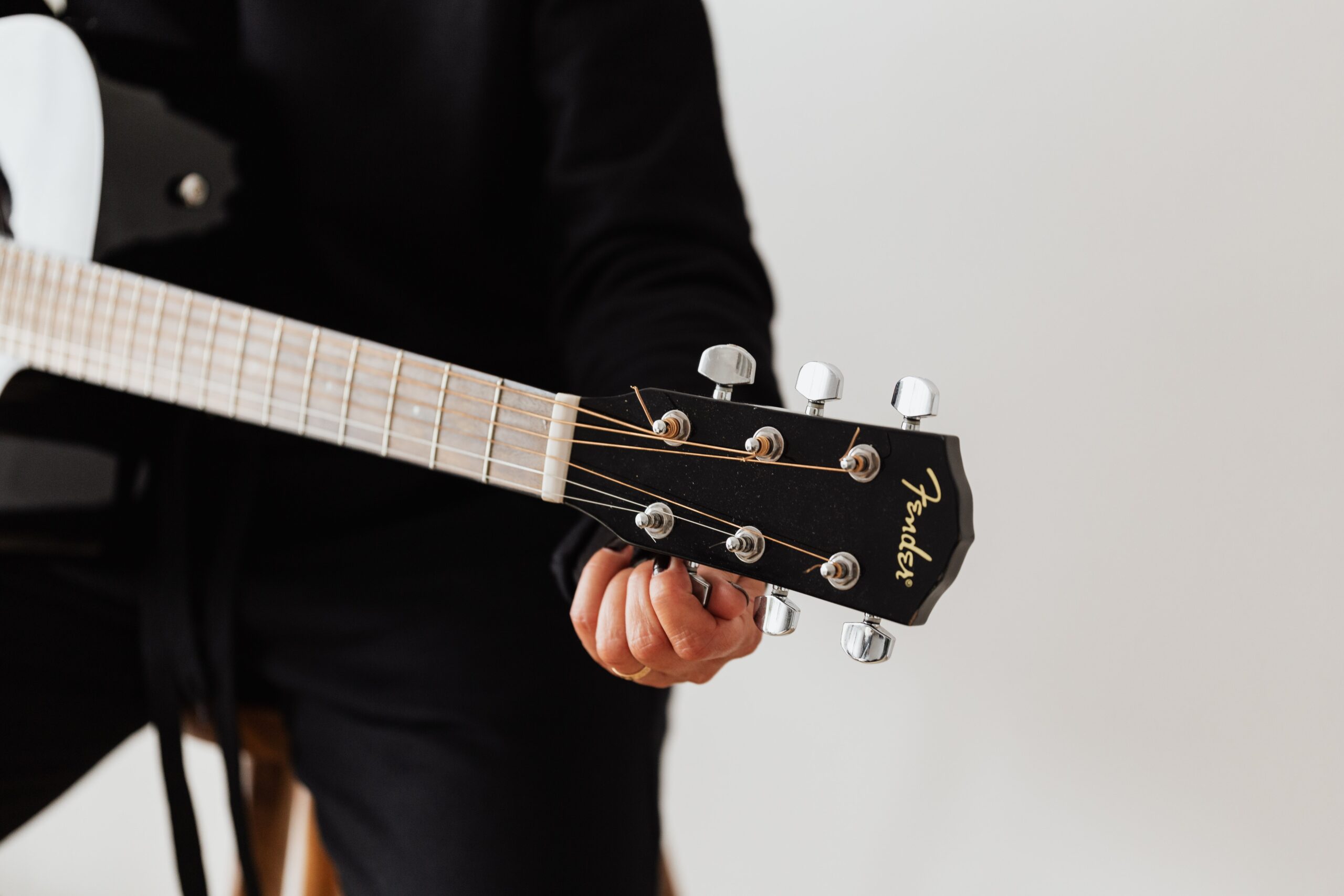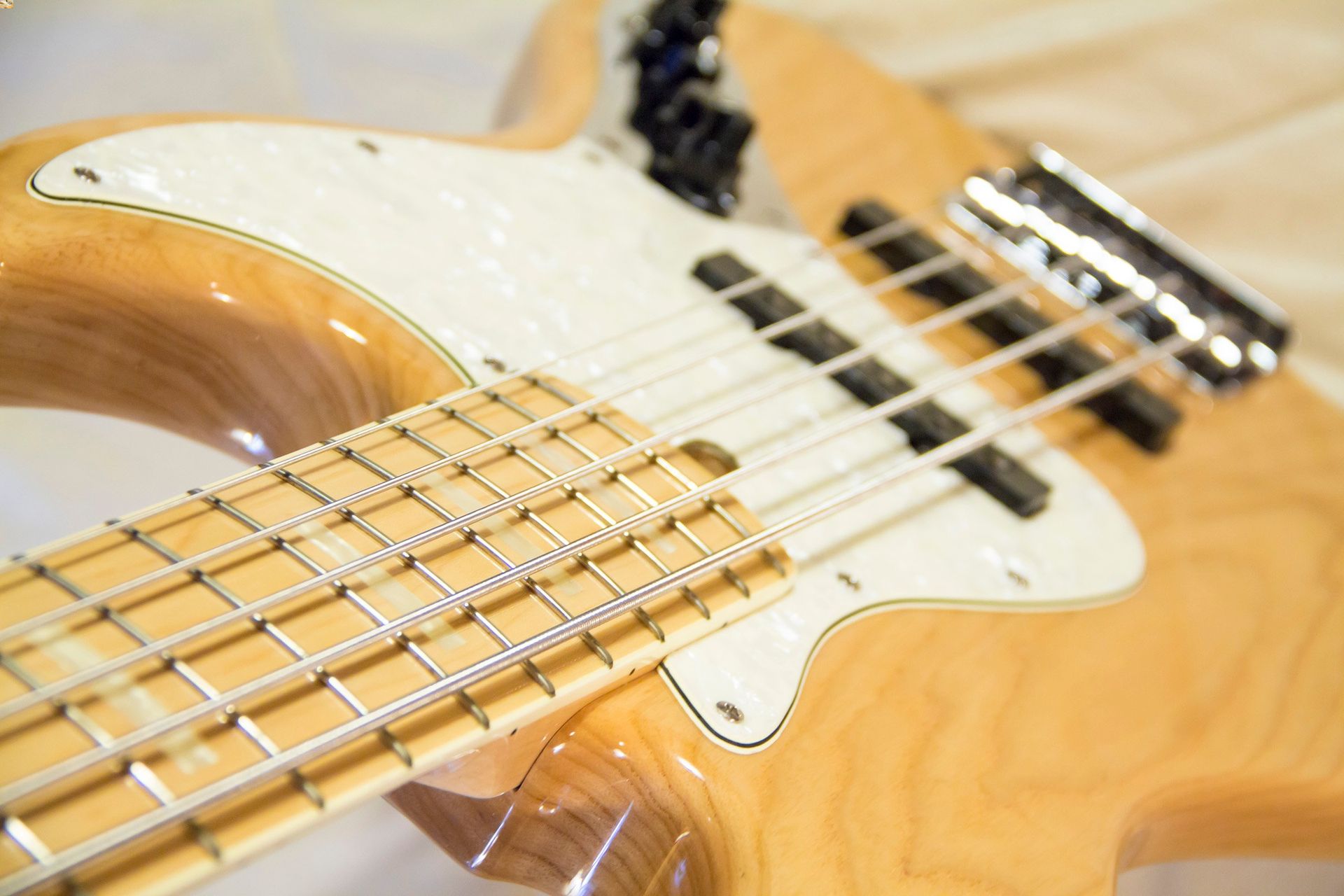Home>Instruments>Guitar>What Should Guitar Be Tuned To


Guitar
What Should Guitar Be Tuned To
Published: February 15, 2024
Learn the proper guitar tuning to ensure your instrument sounds its best. Discover the standard tuning and tips for keeping your guitar in tune.
(Many of the links in this article redirect to a specific reviewed product. Your purchase of these products through affiliate links helps to generate commission for AudioLover.com, at no extra cost. Learn more)
Table of Contents
Introduction
Why is Guitar Tuning Important?
When it comes to playing the guitar, tuning is a fundamental aspect that significantly impacts the sound and playability of the instrument. Proper tuning not only ensures that the notes and chords sound harmonious but also contributes to the overall enjoyment and satisfaction of playing. Whether you are a novice or an experienced guitarist, understanding the significance of tuning and its various aspects can elevate your musical experience.
Exploring the world of guitar tuning involves delving into standard and alternative tunings, each offering a unique sonic palette and creative possibilities. By comprehending the factors that influence tuning choices, such as musical genre, personal preference, and technical requirements, guitarists can tailor their instrument to suit their artistic vision.
Throughout this article, we will delve into the intricacies of standard and alternative guitar tunings, providing insights into their respective characteristics, applications, and the considerations that underpin their selection. Whether you are seeking to expand your musical horizons or gain a deeper understanding of the art of guitar playing, this exploration of guitar tuning will equip you with valuable knowledge and inspire your musical journey.
Standard Tuning
The Foundation of Guitar Tuning
Standard tuning is the conventional tuning method for the six strings of the guitar. In this tuning, the strings are tuned to E-A-D-G-B-E, from the lowest pitch to the highest. This familiar arrangement facilitates the execution of common chord shapes and scale patterns, serving as the foundation for a myriad of musical styles, including rock, pop, blues, and folk.
One of the key advantages of standard tuning is its versatility. It allows for seamless chord transitions and facilitates the exploration of diverse musical genres. Additionally, standard tuning simplifies the process of learning and performing songs, as many instructional materials and songbooks are tailored to this tuning.
For novice guitarists, standard tuning provides an accessible starting point, enabling them to familiarize themselves with the instrument and develop essential playing techniques. Furthermore, the uniformity of standard tuning across various guitars and musical contexts enhances the ease of collaboration and musical communication among musicians.
While standard tuning offers a solid framework for musical expression, it is essential to recognize its limitations. Certain musical styles, such as blues and slide guitar, may benefit from alternative tunings to achieve distinct tonal characteristics and playing techniques. Nonetheless, the widespread adoption and adaptability of standard tuning make it an indispensable cornerstone of the guitarist’s repertoire.
Alternative Tunings
Unleashing Creative Potential
Alternative tunings, also known as open tunings, offer a rich tapestry of sonic possibilities that diverge from the familiar terrain of standard tuning. By adjusting the pitch of the strings to create non-traditional configurations, guitarists can unlock new harmonic textures, enrich chord voicings, and expand their expressive range.
One of the most celebrated alternative tunings is Open D (D-A-D-F#-A-D), which is favored by slide guitarists for its resonant, open sound and the ease of playing in various keys. This tuning lends itself to emotive slide melodies and evocative chord progressions, making it a staple in the blues and folk genres.
Furthermore, Open G tuning (D-G-D-G-B-D) has gained popularity for its association with iconic songs and artists. This tuning, notably employed by Keith Richards of The Rolling Stones, imparts a vibrant, ringing quality to the guitar’s sound, enhancing its suitability for rhythmic strumming and dynamic fingerstyle playing.
Drop D tuning (D-A-D-G-B-E) represents another compelling alternative, characterized by the lowering of the low E string to D. This adjustment augments the instrument’s low-end resonance and facilitates the execution of heavy riffs and power chords, making it a favored choice in metal and hard rock music.
Exploring alternative tunings empowers guitarists to traverse uncharted musical terrain, fostering creativity and innovation. By embracing unconventional tunings, players can uncover fresh melodic pathways, unearth distinctive harmonic nuances, and breathe new life into their musical compositions.
While alternative tunings offer boundless creative potential, it is important to approach them with a spirit of experimentation and adaptability. As guitarists venture into uncharted tuning territories, they can harness the evocative power of alternative tunings to imbue their music with depth, emotion, and individuality.
Factors to Consider
Guiding Your Tuning Choices
When deliberating on guitar tuning options, several factors come into play, influencing the selection of standard or alternative tunings. Understanding these considerations empowers guitarists to make informed decisions that align with their musical objectives and creative aspirations.
Genre and Musical Style: The genre of music a guitarist intends to play exerts a significant influence on tuning choices. For instance, the resonant, open qualities of alternative tunings may be well-suited to folk, blues, and slide guitar styles, while standard tuning remains a mainstay in rock, pop, and jazz genres.
Technical Requirements: Certain playing techniques and musical arrangements may necessitate the use of alternative tunings. For example, fingerstyle guitarists often gravitate towards open tunings to facilitate intricate fingerpicking patterns and embellished chord voicings.
Emotional Resonance: The tonal characteristics of different tunings can evoke distinct emotional responses. Guitarists may explore alternative tunings to imbue their compositions with specific moods, textures, and atmospheres, amplifying the expressive depth of their music.
Artistic Exploration: Embracing alternative tunings fosters a spirit of artistic exploration and innovation. By venturing beyond the confines of standard tuning, guitarists can uncover fresh melodic pathways, harmonies, and timbres, enriching their musical palette and broadening their creative horizons.
Personal Preference: Ultimately, the choice of guitar tuning is a deeply personal decision, shaped by individual musical sensibilities, creative inclinations, and sonic preferences. Whether driven by a desire for experimentation, a quest for sonic diversity, or a yearning for self-expression, a guitarist’s personal predilections play a pivotal role in shaping their tuning choices.
By considering these factors, guitarists can navigate the rich tapestry of tuning options with clarity and purpose, harnessing the diverse sonic landscapes of standard and alternative tunings to articulate their musical vision and captivate audiences with evocative, resonant performances.
Conclusion
Harmonizing Tradition and Innovation
As we conclude our exploration of guitar tuning, it becomes evident that the art of tuning embodies a delicate balance between tradition and innovation. Standard tuning, with its familiar E-A-D-G-B-E configuration, stands as a stalwart foundation for countless musical compositions, providing a universal language for guitarists to communicate and collaborate.
Simultaneously, alternative tunings beckon with their allure of sonic exploration, inviting guitarists to transcend conventional boundaries and forge new pathways of musical expression. From the evocative resonance of Open D to the dynamic versatility of Drop D, alternative tunings offer a boundless realm of creative potential, enriching the guitarist’s sonic palette and infusing their music with depth and emotion.
Ultimately, the choice of guitar tuning is a deeply personal and artistic endeavor, shaped by a confluence of musical influences, technical requirements, and creative aspirations. Whether navigating the familiar terrain of standard tuning or embarking on a journey of sonic discovery through alternative tunings, guitarists harness the power of tuning to articulate their musical vision, evoke emotional resonance, and captivate audiences with evocative, resonant performances.
As guitarists continue to explore the myriad possibilities of tuning, they embark on a quest to harmonize tradition and innovation, weaving a rich tapestry of sound that transcends boundaries and resonates with the essence of musical artistry.











